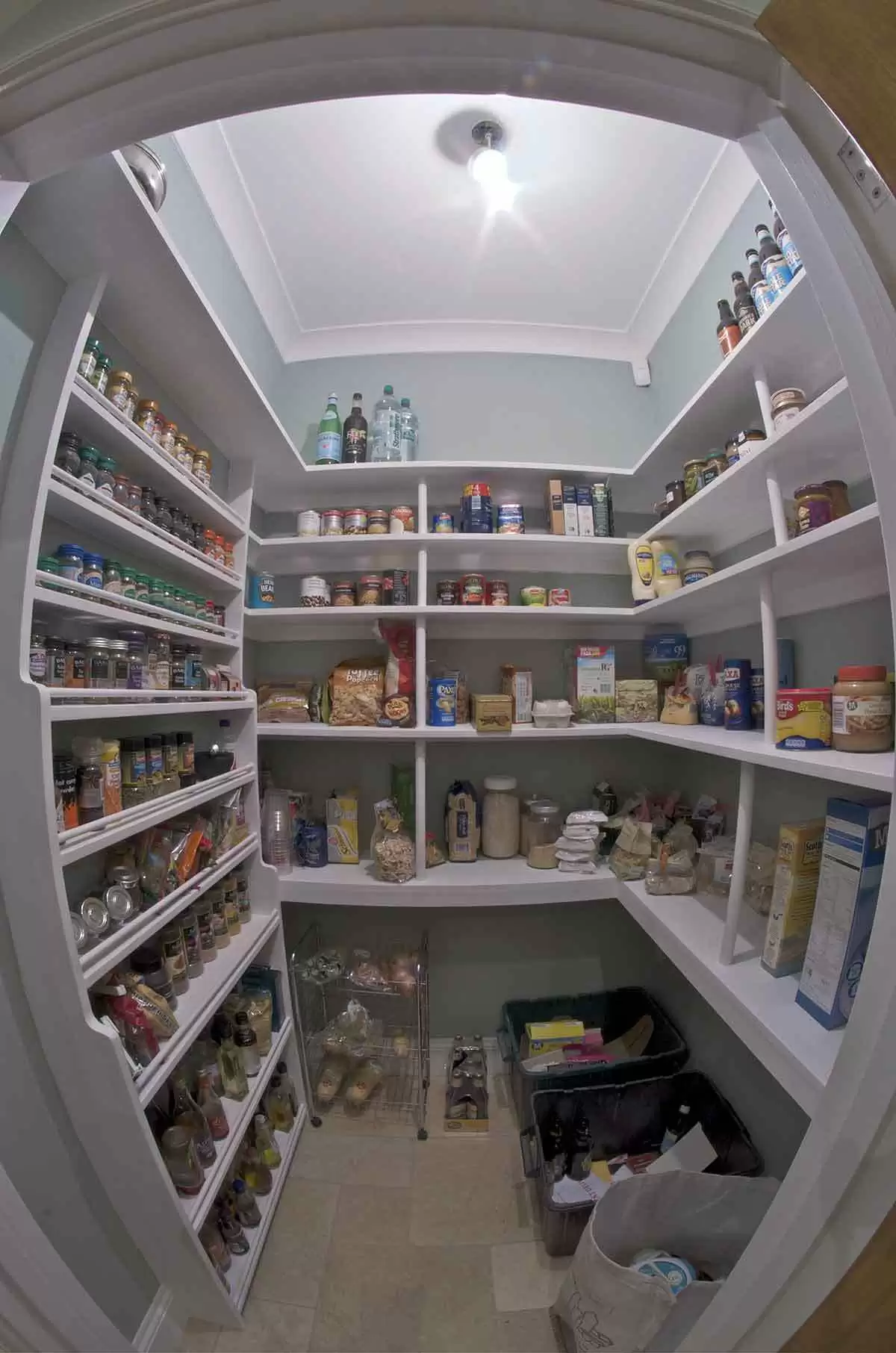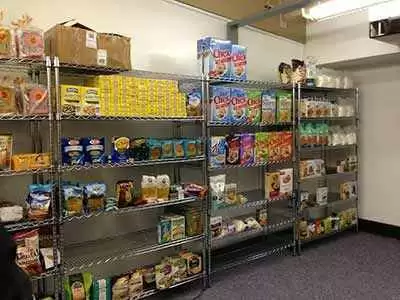
Celiac.com 09/10/2021 - I have been asked on several occasions, “What are the basic items to keep in a well-stocked pantry?” A pantry really isn’t a ‘place’ as much as it is a state of mind. It is a way of thinking and planning ahead when you shop so you always have basic food items on hand, negating the need to run to the grocery every time you cook. Pantry items are dry goods or staples that need no refrigeration and have a decent shelf life. Having the right items on your shelves will make cooking much easier. Cooking gluten-free does not necessitate spending your life in the kitchen.
Remember to rotate—if you buy a can of gluten-free chicken broth, place it behind the can of broth you purchased a few weeks ago that is still on your pantry shelf. That way, you are always using the older items first to prevent them from going out of date.
Celiac.com Sponsor (A12):
Canned foods. Check to make sure the cans you purchase have not expanded and have no dents in the edges; these are signs of bacterial contamination. Select a sturdy shelf for your canned products so the weight of the cans won’t warp or crack the shelving.
What canned foods should you have on hand? Tomato sauce, tomato paste and canned diced tomatoes are perfect for stews, soups, and many baked meat, rice, and/or vegetable dishes. Gluten-free spaghetti sauce is another must for those quick, last minute meals. Canned beans…all kinds of beans…can be added to salads, soup, stews, rice dishes, chili, pasta sauces, and they are an inexpensive, fiber-rich source of protein. A can or two of tuna fish on the shelf always comes in handy for quick sandwiches. Gluten-free chicken broth should be a constant staple. You can open a can of broth, add some chopped veggies and rice, and voila! You have soup! Progresso has a gluten-free cream of mushroom soup (check label to be certain it is still gluten-free each time you purchase it). Keep several cans on hand for casserole dishes—you know, where you chop up last night’s leftovers and hide them in the soup, under a crust of mashed potatoes, crushed potato chips or gluten-free crackers, hoping no one will recognize you are recycling food! Canned clams are handy to have for those last minute chip dips. Or add the clams to the canned mushroom soup, stir in a little white wine, then spoon over gluten-free pasta. Black olives are a nice addition for when you make tacos, or to add to salads or pizza. Gluten-free pork and beans make the perfect quick side dish, or bake them with pork chops for an entrée. Even a can of anchovies may be useful for a company Caesar salad or pizza. Gluten-free canned pie fillings are perfect for a quick apple crisp or cherries jubilee. Don’t forget to pick up a back-up can of coffee or gluten-free tea bags to put on that pantry shelf.
Some people like to stock a supply of canned fruits and vegetables, but I would encourage you to use fresh when possible. Even frozen fruits and vegetables retain more of their nutritional value than their canned counterparts. That being said, you may want to stock canned mushrooms for last minute pizzas, pasta sauces, or to sauté to put over steak. And the individual containers of applesauce are perfect to use in cake mixes in place of butter or to add to a bag lunch.
Dried goods. Dried beans come in all kinds of varieties and they cook rather quickly. There is a large selection of dried fruits on the market that can be added to cookies, cakes, salads, used to stuff a pork roast, or to put over cereal in the morning. Stock a variety of rice (Arborio, basmati, white, brown, and wild rice), but do not buy the pre-seasoned boxes or packaged wild rice as most of these are not gluten-free. The variety of gluten-free pasta is increasing every day, so treat yourself and keep a nice selection of pasta on that pantry shelf for Spaghetti Bolognese, or macaroni and cheese, or Italian wedding soup, or pasta salad. Don’t forget to pick up an extra container of gluten-free grated Parmesan for your pasta!
Bottles, jars and condiments. Using different oils and vinegars varies the taste of your foods. Stock a good quality virgin olive oil, a corn oil, and perhaps a sesame or peanut oil (for stir-frying). Don’t forget to pick up a can of gluten-free nonstick spray for baking. While apple cider vinegar is the norm, a good balsamic vinegar is excellent not only in salads, but for marinating meats and vegetables before grilling or broiling. Gluten-free soy sauce is another useful condiment for marinating foods, adding to rice, and of course for stir-frying. If you like things spicy, don’t forget to add a bottle of hot pepper sauce. There are some excellent gluten-free barbecue sauces that are also handy to have around. A jar of roasted red peppers will put the finishing touch on a pasta salad, pasta primavera, antipasto tray when unexpected company arrives, or to add to sandwiches. Gluten-free pickles and pepperoncini are great to pack in bag lunches. Honey will come in handy when making tea, sugar syrups to pour over pastries, to use in cookies, or to use as a dip for warm, fresh-out-of-the-oven gluten-free biscuits. Other condiments include gluten-free ketchup, mustard, mayo, molasses, lemon juice, maple syrup (or gluten-free pancake syrup), peanut butter, jelly, and salsa, and perhaps a bag of gluten-free tortilla chips.
Baking needs. This category includes granulated sugar, brown sugar, powdered sugar, cornstarch, baking soda, gluten-free baking powder, and perhaps yeast. Semi-sweet chocolate chips are needed for those ‘must have chocolate chip cookies’ moments. Cocoa is good for making hot chocolate and adding to cakes, but beware of hot chocolate mixes because many are not gluten-free. A variety of nuts is nice to have close at hand to put on top of hot or cold cereal, add to salads, desserts, dips, stir-fries, or just to eat plain as a snack. You will be glad to have a can of evaporated milk and sweetened condensed milk on your shelf when you want to bake desserts.
I have not included flours in this category because the alternative, gluten-free flours have a short shelf life. You are better off keeping the flours in the freezer. However, there are some excellent gluten-free breadcrumbs on the market that you may want to include on your pantry shelf for breading chicken, using in meatloaf and meatballs, and sprinkling on casseroles.
Boxes foods. Gelatin isn’t just for gelling anymore. Add flavored gelatin to cake mixes for a whole new taste treat. Or use twice as much unflavored gelatin in place of the xanthan gum called for in a recipe. Gluten-free packaged puddings are a good staple also. Mix vanilla or tapioca pudding with fruit juice then blend in cut-up fruits. Use pudding mix in cakes… or just make pudding! There are new gluten-free cereals coming on the market all the time. Keep a variety of cereals on hand for breakfast, for ‘krispies’ snacks, or to crush for piecrusts. A box of gluten-free brownie or cake mix and a can of gluten-free frosting is a good back up for spur of the moment events. A box of gluten-free crackers will carry you through those ‘must munch on something’ times, topped with a piece of cheese, or spread with peanut butter, or to use to dunk in soup, or top with cream cheese, small shrimp, and a dab of gluten-free cocktail sauce for company. Individual boxes of fruit juice are perfect for basting poultry, pork roast and ham, using in cake and breads in place of water, and adding to a child’s lunch box.
Herbs and spices. I won’t even attempt to list all of the herbs and spices that are available to you, but I will mention a few that are used the most and can dress up a simple dish. Use herbs liberally, both for their flavor and for their medicinal purposes. Fresh herbs are best, when available. Herbs and spices that are highly recommended for the pantry include: salt, pepper, oregano, basil, garlic powder, cayenne pepper, chili powder, cumin, dill, dry mustard, paprika, cinnamon, ginger, nutmeg, mint, cream of tartar, and dried parsley. For flavorings, vanilla and almond flavoring are a must.
One final thought…You may want to keep a small supply of wine and/or liqueur in that pantry. Liqueurs, when kept in a cool, dark place, last almost indefinitely and their concentrated flavors add a lot of flavor to ice cream toppings, brownies, cream pie fillings, and more. Wine adds richness to marinades, salad dressings, sauces, and is perfect to use when de-glazing a pan.
Marinated Vegetable Salad (Gluten-Free)
Ingredients:
- 1/8 tsp. salt
- 1/8 tsp. pepper
- 1/8 tsp. basil
- ¼ tsp. dill
- 3 Tbsp. olive oil
- 2 Tbsp. balsamic vinegar
- 1 can (10 oz.) hearts of palm, drained and cut into ½-inch slices
- 1 can (10 oz.) artichoke hearts, drained and cut in half
- 1 can (10 oz.) asparagus tips, drained
- 1 can (15.5 oz.) navy beans (or northern, kidney, or lima beans), rinsed well and drained
Directions:
In a medium bowl, whisk together first 6 ingredients. Add remaining ingredients; toss, cover with plastic wrap, then refrigerate for several hours before serving. Serves 6.




.webp.a261ad5246d9b67cdf10b18c1a403790.webp)







Recommended Comments
Create an account or sign in to comment
You need to be a member in order to leave a comment
Create an account
Sign up for a new account in our community. It's easy!
Register a new accountSign in
Already have an account? Sign in here.
Sign In Now